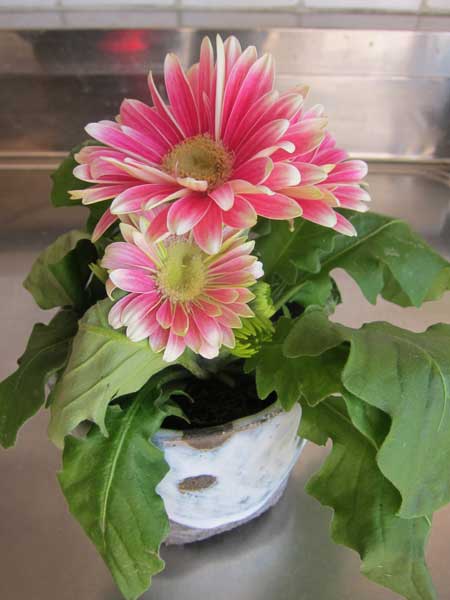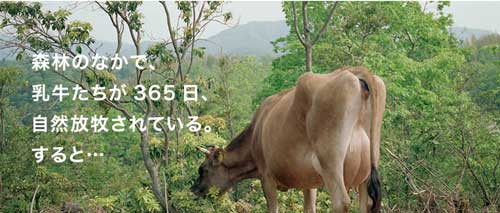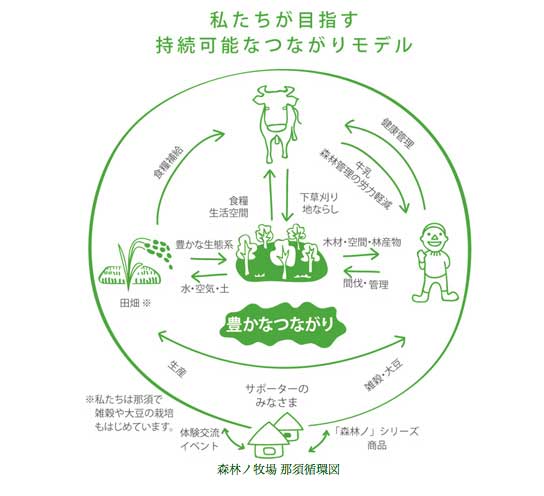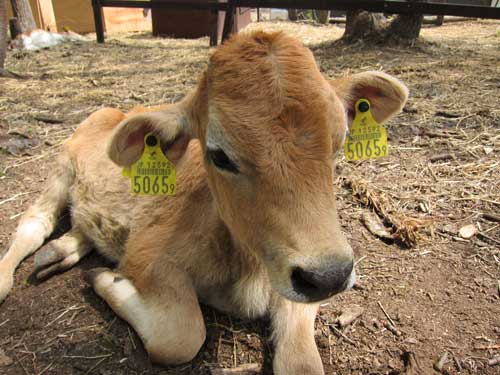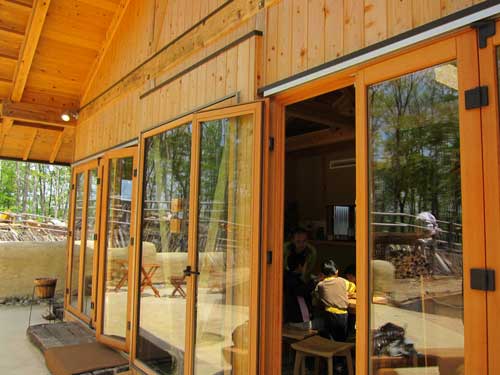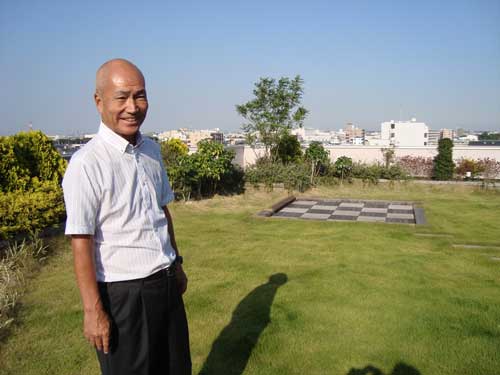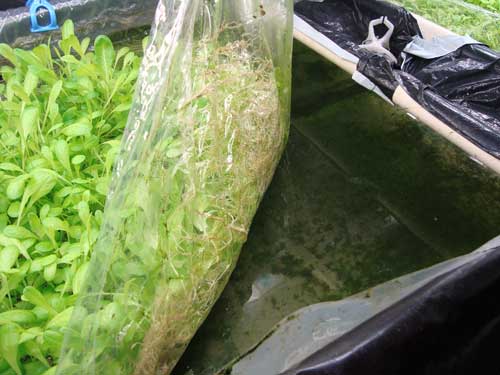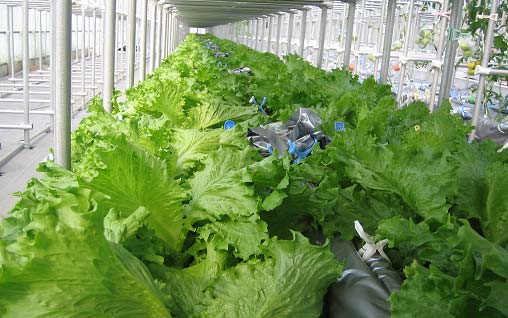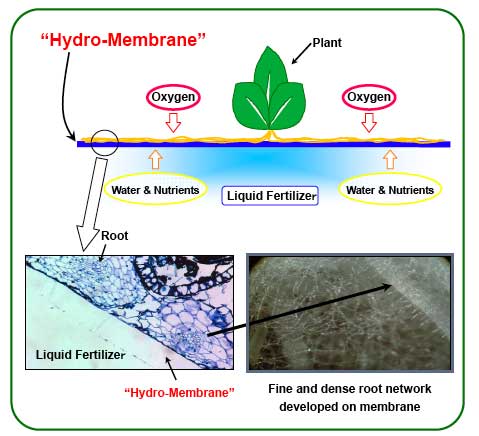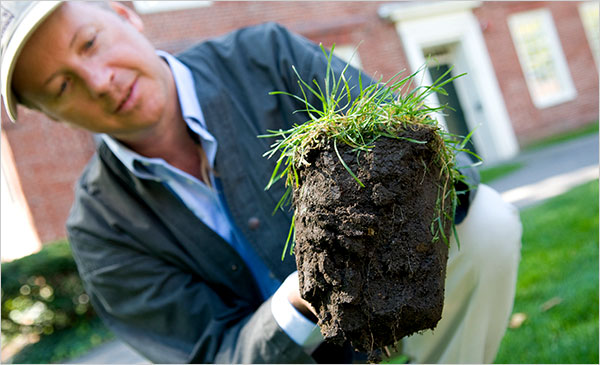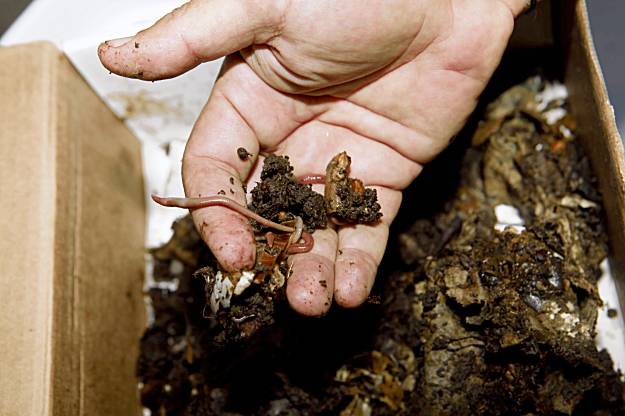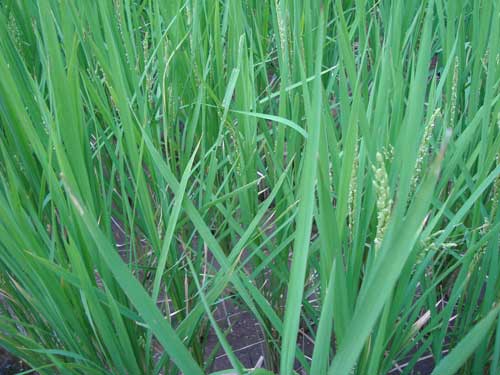
Yesterday I stopped by Ginza Farm to check on the rice. As you can see in the photo above, the rice seeds are already forming. Despite the challenges of growing rice in a high rise-district, as Iimura-san explained last month, the plants are thriving.
In fifteen minutes, I saw fifteen visitors, plus the attention of the construction workers next door. One visitor was a Ginza gallery worker, another a retiree and his wife, a chef, two smartly dressed young women, and a young guy taking photos of the ducks. Clearly, Ginza Farm has become a neighborhood treasure, with repeat visitors checking on the progress of this urban farm.
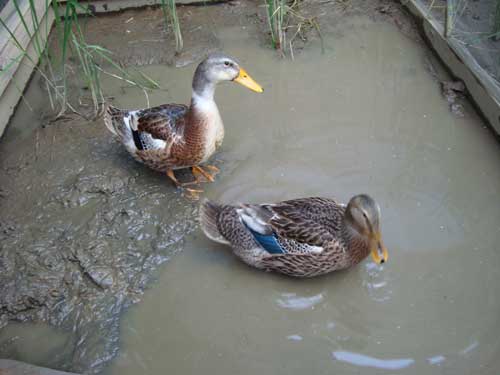
Born on July 3, the ducks have become almost full grown in just over two months. They have gone from cute yellow ducklings to mature, striped fowl. The sign in front of them explains that they are an integral part of the rice farming, in a method called aigamo nouhou (あいがも農法). Ducks that are a cross-breed that includes wild duck eat weeds and insects in the rice paddy, and provide fertilizer with their droppings. This natural method reduces pesticide, insecticide, and fertilizer, and has been introduced throughout Asia. Aigamo nouhou rice farming was used in pre-Edo Japan, and was recently revived in the 1990s.
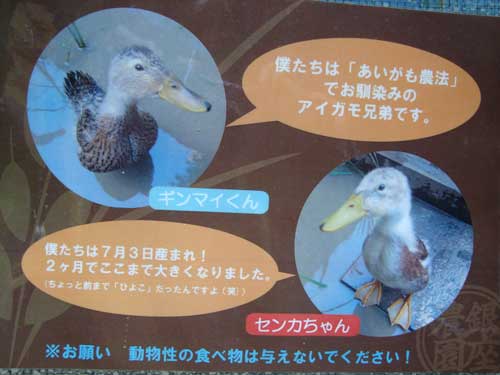
I am amazed at how well Ginza Farm attracts the neighbors’ attention, how well they communicate their commitment to natural farming, and how they combine attractive design with environmental education. In addition to the well crafted wood logs that forms the paddy and provides seating and tables, there are flowering morning glories, potted pine trees, bamboo, hostas, and wind chimes as decoration.
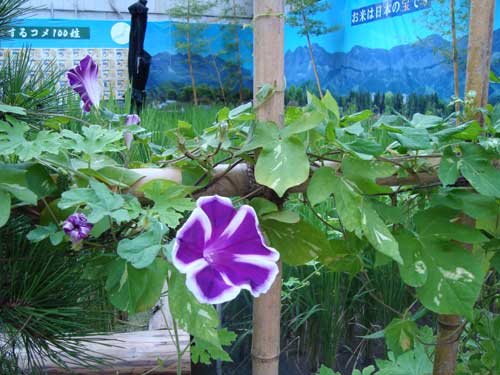
For more information on Japan-Bangladesh duck-rice farming cooperation and science, please see Hossain, Sugimoto, Ahmed, Islam, “Effect of Integrated Rice–Duck Farming on Rice Yield, Farm Productivity, and Rice–Provisioning Ability of Farmers,” Asian Journal of Agriculture and Development, Vol 2, No 1, 2005, pp 79-86.
